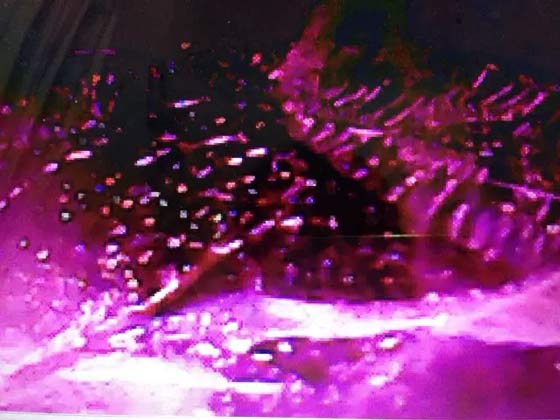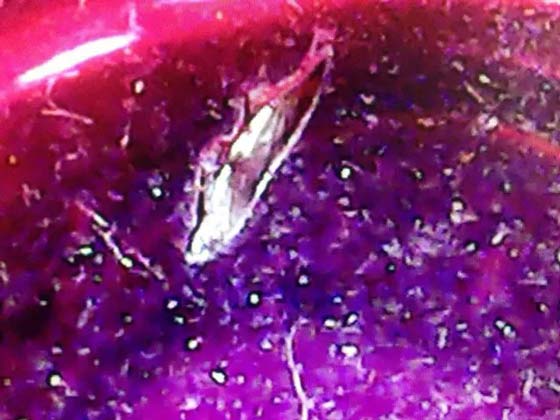Briefly describe the causes of neglected natural inorganic gemstones
You can see a description of such things as "gems are formed in ancient and complex geological environments." But few people have noticed: how to understand the word "complex" here. As a result, many people in practice cannot correctly understand the complex internal features of natural gemstones formed in complex environments. The causes of natural inorganic gemstones are diverse. Take natural red sapphires as an example. The genesis of natural red sapphire is roughly divided into three types of mineralization, namely, magma, hydrothermal alteration and regional metamorphism. Due to limited space, we will only briefly outline their basic principles. The Earth is a huge reservoir of chemical elements, composed of 92 naturally occurring chemical elements that make up the rocks in the Earth's crust, eight of which make up almost the entire mass of the Earth's crust. (Most gemstone minerals consist of at least 2 of these 8 elements.) To put it simply: the earth's crust is a shear-circulating moving body. The rocks and water in the earth's crust are brought into the earth's crust by the shearing and circular motion of the earth's crust until the mantle. As the depth deepens, the temperature becomes higher and higher, and the pressure becomes larger and larger. Under the action of high temperature and pressure, the chemical elements in the rock and water are decomposed and released, returning to the smallest unit atom of the element, and Accumulated by type, forming a myriad of heterogeneous atomic groups. It is possible to re-synthesize atoms. Under the action of pressure and volatile matter, the atomic group gradually rises along the weak part of the earth's crust along the volatiles. Of course, this process is a slow, iterative, gradual, and turbulent process. Also due to the effects of temperature, pressure, etc., these atomic groups are also in complex interweaving movements during the ascent process. This kind of movement promotes the bonding between atoms, resulting in new molecular clusters of different sizes and supersaturations in which you have me, I have you, when you gather, and when you are constantly interlacing and overlapping. The crystal nucleus and crystal bud are the initial crystal growth. The conditions under which the molecular group crystallizes the nucleus and crystal buds depend on complex temperature, pressure and molecular group supersaturation. The factors that cause the change of the supersaturation of the molecular group are extremely complicated. The crystal nucleation of the crystal nucleus and the crystal bud are not only limited by the supersaturation of the molecular group but also the supersaturation of the molecular group. When the temperature, pressure and supersaturation of a certain molecular group reach the crystallization condition, numerous crystal nuclei and crystal buds are crystallized. The number of crystal nuclei and crystal buds which are crystallized varies depending on the molecular group supersaturation. The sheer number is beyond people's imagination. When one or more molecules with high supersaturation have crystallized a large number of crystal nuclei and crystal buds, their supersaturation is gradually reduced, and then combined with turbulent temperature and pressure, these crystal nuclei and crystal buds are gradually placed. Slow or stop growing. Instead, another or several molecular groups whose original supersaturation is relatively low in crystallization conditions are under the action of temperature, pressure, etc., and the supersaturation gradually increases in the interlaced overlapping motion, and the crystallization conditions gradually mature. Crystal nuclei and crystal buds also crystallize. The crystal nucleus and crystal bud that crystallize first, grow slowly or stop growing due to the gradual decrease of the molecular group supersaturation. These crystal nucleus and crystal buds are caught in the molecular group floating in motion, or attached and precipitated in a larger On other crystal nuclei, crystal buds, crystals, and surrounding rocks, these crystal nuclei, crystal buds, and crystals may be dissolved again into oxides or returned to molecules with changes in temperature, pressure, and water. status. This phenomenon of crystallization, dissolution, recrystallization, and re-etching is repeated for a long time. In this long and turbulent process, a very small number of crystal nuclei and crystal buds encounter a further growth environment and continue to grow. The growing crystals are captured and entangled into the growth system as crystal nuclei, crystal buds, dissolution bodies, crystal fragments and surrounding rock fragments that are captured as part of the gemstone. The process of crystal nucleation growth is a complex and slow process that has gone through millions of years or even hundreds of millions of years. For example, South African diamonds have grown over hundreds of millions of years. Due to the slow growth and complex environment, there are few crystals capable of mineralization, and various defects of the crystal are inevitable. This is the simple cause of gemstones, gemstone associated ore and symbiotic ore, and it is also a simple cause of gemstones. This cause seems simple, but it cannot be imitated by humans. That is to say, although the growth system of human synthetic gemstones has other mineral molecules, the number is extremely limited, and the temperature and pressure system are not so complicated, and the cycle is less likely to be so long. Without the complex growth system and long growth cycle, it is impossible to have the rich internal features of natural gemstones. Fine crystal nucleus, crystal bud and healing crack (magnification 90X) Fine crystal nucleus and crystal bud (magnification 100X) Fine crystal nucleus, crystal buds and crystal fragments (magnification 90X) A preliminary understanding of the simple causes of the natural gemstones and gemstones into the inclusions, and preliminary understanding of the basic direction of gem identification, also understands the complex internal features of natural gemstones, understanding the basic characteristics of natural and synthetic gemstones. the difference. Yantai Belief Cap Co.,Ltd. , https://www.jingermachinecn.com

